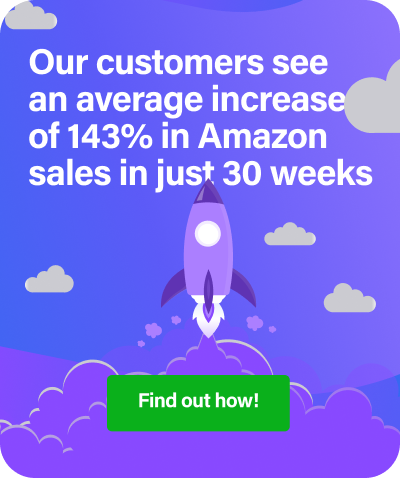The maxim “location, location, location” isn’t just useful for real estate, ecommerce retailers can use it, too. Having the right product to sell is only half the battle, as it’s all for naught if it’s not in a place where people look. What you, the online merchant, have to do is put your treasures on display where there will be digital foot traffic, and Amazon is the obvious choice (and third party sellers know it), but eBay and other smaller marketplaces can be great for finding product ideas, seeing trends and unearthing sales opportunities. RepricerExpress has discovered the best corners of the internet for online marketplaces, so keep reading to learn where they are.
Amazon
We’d be remiss if we didn’t mention Amazon, the site with the top web sales from last year. They’re a giant in the online marketplace mall, the sort of store that everybody’s heard of and has shopped in. Like it or lump it, Amazon is one of the best — if not the best ‐ marketplaces around, and ignoring it can only hurt your business. Third party sellers continue to join Amazon in their droves and it’s perhaps the only online sales your company may need (certainly a least risky path to online selling).
Want Proof?
Here are just a couple of reasons why Amazon deserves a second look, if it hasn’t already:
- Monthly visitors: At an average of 58 million per month, there’s a huge market to tap into. Although it would be impossible to reach them all, sellers do report a 50% increase in sales when they join the Amazon marketplace.
- Numbers and variety: It’s hard to argue against Amazon’s size, especially when using the mall metaphor again. A store inside a mall has a much better chance of receiving visitors if it’s under the same roof as 100 other ones than if it sits on a street by itself. Plus, if and when visitors want variety — which Amazon offers in spades — you’re one of the retailers they’ll turn to.
eBay
With average quarterly web sales of just under $4 billion last year, the proof is in the pudding that this like-minded online marketplace is almost as hot as Amazon. Using multi-channel software like SellerExpress can allow merchants to sell across many marketplaces from one central online solution and eBay is yet another marketplace you can see what’s popular and trending for ideas for your main Amazon store. Of course, what sells on Amazon doesn’t always sell well on eBay and vice-versa, but any serious third party and FBA seller should at least have one eye on what’s happening on eBay for fresh perspectives and product ideas.
Craigslist and Kijiji
Not just for missed connections and housing searches, these two sites are another mini-goldmine for online merchants. Perhaps not in terms of sales, but again, in terms of what ideas you can gauge from the sites’ activity and trends.
Both sites offer a plain-look, no-frills approach, but the big advantage of that is few restrictions. Sellers aren’t burdened with fees, product limits, SEO needs, or special buyer/seller programs. Downside? You have to go through different cities, states, territories and countries to ensure your inventory is seen by everyone, and repricing becomes a lot more difficult.
Etsy
15 million buyers and sellers may not be even close to the 58 million unique visitors Amazon gets each month, but it’s still a group of people equal to Rakuten’s Play.com customer base in the UK. One drawback is that products generally have to fit into an artsy category, but typically women are the dominant buyers of those so they’re definitely a market to tap into (especially considering they share almost identical buying habits as men). Again, for Amazon third party sellers Etsy may prove useful for ideas, particularly if you plan to sell your own unique products through the Amazon Brand Registry programme soon—on Etsy, you just might get a glimpse of what’s already selling in certain categories before committing to registering your products via Amazon’s new programme.
Bonanza
Bonanza is free to list (although the site takes a tiny bit of commission), distribute and uses sales consultation, has “Faved Item” and “Faved Seller” sections at the top, checkout options similar to eBay and Amazon, and an incredibly easy navigation. And if you want to import your inventory from eBay and Etsy, there are hover-links that let you do just that. It’s hard to say no to such a clean marketplace, especially when they’ve got Bonanza-specific features that operate just like the big-timers, but for serious Amazon FBA sellers, the site might simply provide you with a different perspective on hot product ideas.
Final Thoughts
Before you start listing your inventory on every online marketplace, it’s perhaps wise to start with the largest marketplace that encourages competition—Amazon—since that’s where you’ll readily access the largest customer base—and can avail of FBA when fulfilment of orders becomes too much for you (start with getting an Amazon Seller Central account). eBay’s way of doing things can cause some merchants to feel lost amidst the noise, and the other smaller marketplaces may not have the size of audience you need to create a viable return. By all means, keep your eyes on all the above, for trends, product ideas and sales opportunities, but selling on Amazon will offer you the discipline and experience of selling online with a focus on customer service—and make sure you’ve got RepricerExpress beneath your wings. It’s easier to use than any of the marketplaces we talked about, and even comes with a 15-day free trial to take for a test run.


